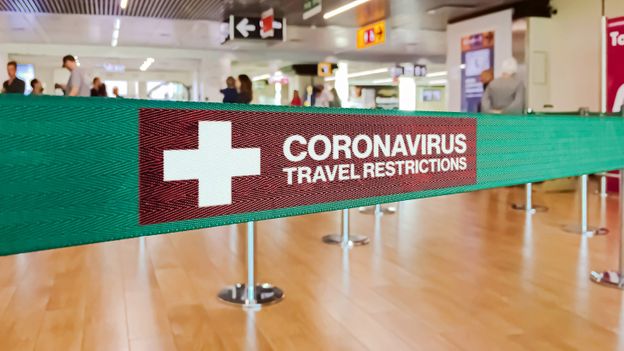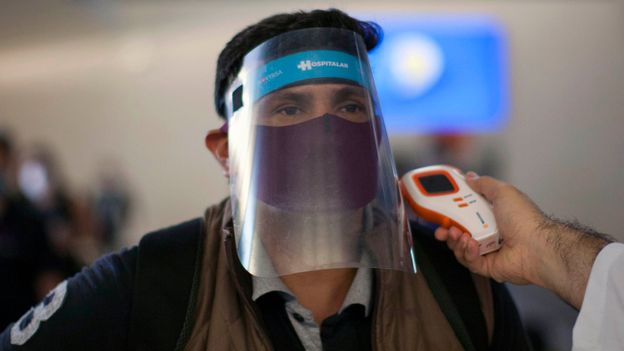It’s 2022 and you’ve just arrived at the travel destination of your dreams. As you get off the plane, a robot greets you with a red laser beam that remotely takes your temperature. You’re still half asleep after a long transoceanic flight, so your brain barely registers the robot’s complacent beep. You had just passed similar checks when boarding the plane hours ago so you have nothing to worry about and can just stroll to the next health checkpoint.
This pandemic will change the culture of how people are travelling
As you join the respiratory inspection queue, a worker hands you a small breathalyser capsule with a tiny chip inside. Conceptually, the test is similar to those measuring drivers’ alcohol levels, but this one detects the coronavirus particles in people’s breath, spotting the asymptomatic carriers who aren’t sick but can infect others. By now you know the drill, so you diligently cough into the capsule and drop it into the machine resembling a massive microwave. You wait for about 30 seconds and the machine lights up green, chiming softly. You may now proceed to immigration, so you fumble for your passport and walk on.

These technologies may sound like science fiction, yet they are anything but. If you had travelled earlier this year when countries began locking down, you may have already spotted the remote infrared thermometers used in airports. However, while thermometers are helpful, they aren’t ideal. People can have fevers for others reasons or may harbour coronavirus without symptoms. To spot early infections or asymptomatic carriers, one has to check for the coronavirus particles in their breath.
That’s where the breathalyser comes in. You haven’t yet seen it at transit hubs, but it already exists at the photonics lab of Gabby Sarusi, professor at Ben-Gurion University of the Negev in Israel. When Covid-19 struck and hospitals worldwide struggled to build fast and accurate biological diagnostic tests, Sarusi looked at the problem differently. As a physicist, he viewed the coronavirus’ spiky sphere not as a biological agent but as a nano-sized particle that can be sensed by specialised electrical equipment. When tossed into the midst of an electromagnetic field, the particles cause certain “interference” to the flow of electromagnetic waves, which can be detected. That’s what happens when the capsule is dropped into the microwave-resembling machine.
“We are taking the chip inside the capsule and we’re measuring it with a spectrometer that’s radiated with the magnetic waves,” Sarusi explained. If coronavirus particles are present, he said, “we can sense the shift.”

His team has already compared the device’s performance against the standard swab tests on 150 patients and found it was 92% accurate. That’s pretty high, Sarusi notes, given that many approved medical tests have lower accuracy than that. However, because the breathalyser results will have high stakes – travellers may be denied boarding or quarantined – the team wants to improve the device further. Once it’s ready, they hope to get an expedited approval from the FDA because it could revive the travel industry. Sarusi expects the machines to start appearing in airports and train stations soon. “Maybe by the end of this year. Or next year,” he said.


No comments:
Post a Comment